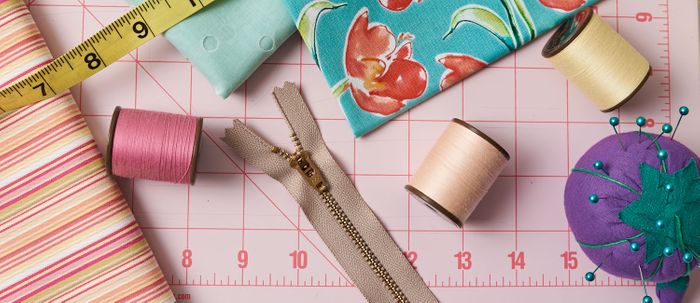Attach an All-in-one Facing to Sleeveless Garments
Two methods that finish the neckline and armhole
An all-in-one facing provides a clean and supportive edge finish for a sleeveless dress or blouse. Attaching the facing is different from sewing a neckline or armhole facing, though. Follow the techniques shown to install this facing in a garment with a front or back opening (such as a button-front blouse, or a dress with a center-back zipper) or to install in a garment that goes on over the head, like a tank-style top.
Sewing, trimming, grading, and clipping the neckline and armhole seam allowances are similar for both types of garments. However there are key differences in the sequence of steps for attaching the facing, especially when turning the garment right side during the process. This video demonstration carefully walks through the process, to help clarify the steps.
If the pattern you’re using doesn’t include an all-in-one facing, it’s easy to draft the facing pattern yourself. Find out how in “How to Create Facings” by Daryl Lancaster, Threads #185 (June/July 2016).
Web Extra: Four Smart Ways to Finish a Facing Edge






Thank you for this great guide! Finally I know how to attach it! Great news :)
Great lesson. But, one question; when do U get to try on the garment to ensure the sides fir, and the armhole cut outs are appropriate for me? I suppose, I'd have to first pin the dress together, check these fit area, note or mark them, then take the dress apart again to be able to lay it flat to put the facing on it. Any suggestions?
wow, You ya'll make everything look so easy. I love your videos, you wouldn't believe how many times I've been sewing something and got stuck on one thing or another, run to my laptop and pull up this site. I thank you so very much for all your help.
Great information, will be sure to try. Thanks for sharing!!!!
I am going to do this right now!!!
I can't tell you how many times I've done facings like this and forget to use this (or similar) method. I know better but I forget when I'm in a hurry to finish a simple pullover top! In a hurry always takes longer, doesn't it? That's when the seam ripper is our best friend. Thanks for the reminder. If you've ever made ladies briefs, this method works for making a smooth crotch seam without exposed seam allowances. Comfy!
Hi, Helen,
To check the fit, you'd need to make a muslin before sewing the final garment. You could try on the garment without the facing and adjust the side seams, shoulder seams, and armholes as needed, but you'll have to be sure to make exactly the same changes to the facing before attaching it. I find that a little fussy to do, and prefer to make a muslin--even if it's a quick one of just the upper part of the bodice--so I can adjust the pattern before cutting the "real" fabric.
Carol
This is how I was taught to do it! I love it! It keeps the facings from falling out. Such a nice finish!
One thing I do, that I think makes it a little bit nicer, I pin the facings to be just 1/8" out from the bodice. So when you sew the seam, the facing ends up smaller. This pulls the seams to the underside so they don't show. This also makes pressing easier.
Thank you for sharing! Good video!
WHERE'S THE VIDEO???????????????????????
So helpful! Thanks alot!
Fantastic - I remember reading this in the May edition but then was able to find the article online when I needed it. Thank you for a well-done video. I'm sure I'll use this time and time again.
What about the zipper? I'm really confused because this method is supposed to work with a center back zipper, but I'm not sure how it fits into the process.
I was thinking the same thing. What about the zipper? I guess you install as normal, then hand stitch the facing down over it, folding at the seam allowances so as not to catch in the zip.